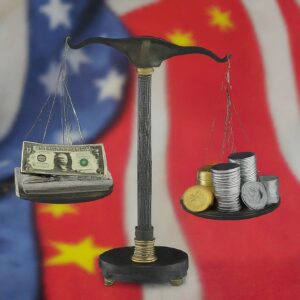China Licensing Negotiations
Our China lawyers have been increasingly drafting contracts for foreign companies licensing their brand names, concepts, or technologies for use in China. Historically, this type of licensing was primarily confined to the industrial sector. Nowadays, a significant portion of our work involves crafting licensing agreements for companies eager to tap into the Chinese market without establishing a physical presence or operations within China.
Tactics and Countermeasures
This post outlines the negotiating tactics our China lawyers frequently encounter from Chinese counterparts in these types of deals. It also provides strategies for foreign companies to effectively counter these common tactics.
China’s Licensing Landscape
The Chinese government is conflicted about how to approach this new form of licensing. While it is eager for technology transfers in the industrial sector, its enthusiasm does not extend to the service sector, where there is apprehension that foreign involvement might lead to excessive control over the Chinese system.
This ambivalence is reflected in the behavior of many potential service sector licensees we encounter. While industrial licensees negotiate vigorously in a manner akin to typical commercial negotiations worldwide, negotiations with Chinese service companies tend to be more intense. The Chinese parties often adopt a tough stance in these deals.
In these service sector licensing contracts, we are beginning to observe a resurgence of old negotiating tactics from the 80s and 90s—tactics that were prevalent when Chinese companies were entering into their notoriously challenging joint venture agreements. During negotiations with Chinese firms for service sector licensing, these historical tactics are becoming increasingly evident.
Common Negotiating Tactics and Counterstrategies
1. Endless Issues
2. Artificial Deadlines
This tactic is particularly manipulative and surprisingly effective. Early in the negotiation process, the Chinese side sets a definitive date for signing the contract and organizes an elaborate signing ceremony, purportedly to be attended by high-level government or Communist Party officials. Or it will create a deadline based on some supposed law change
The timeline is structured to appear reasonable, ostensibly allowing enough time for both parties to agree in good faith. However, the Chinese side manipulates the process to ensure no agreement is reached, leading to a sense of urgency and panic on the foreign side. The fear of losing face if the contract isn’t signed—especially in front of prestigious officials—pressures the foreign negotiators into making concessions.
Variants of this tactic include:
- Crude Approach: The Chinese side steadfastly refuses to yield on critical points, betting that the foreign negotiators will fold as the deadline looms.
- Subtle Approach: Initially, the Chinese side may yield on significant issues while maintaining firm stances on less critical ones, employing the “wear them down” strategy. Then, just days before the ceremony, they announce essential modifications to the contract, supposedly mandated by external authorities like government regulators or financial institutions. This last-minute pressure combined with the fatigue of the negotiation process is used to secure amendments highly favorable to the Chinese side.
Counterstrategy for Artificial Deadlines: Avoid agreeing to fixed signing dates from the outset. Demonstrating a willingness to bypass artificially imposed deadlines not only protects against rushed decisions but also signals to the Chinese side that such tactics will not pressure your team, thereby fostering respect rather than exploitation.
3. Revisit the Deal Without the Lawyers
A commonly employed technique involves revisiting key contractual issues after the lawyers have exited the negotiation room. This occurs once the Chinese side has seemingly agreed to significant terms and the contract is officially signed, leading key negotiators, China advisors, and, crucially, the international lawyers, to move on to other projects.
Subsequently, as the project commences and the foreign party becomes more deeply invested, the Chinese side targets the most committed members of the foreign team. They propose changes to critical contract provisions, often justifying these adjustments as necessary due to new legal requirements, regulatory demands, or financial stipulations imposed by banks and insurance companies.
At this stage, the primary contacts are the foreign team members who are deeply committed to the project’s success and may lack complete background knowledge of the initial negotiations. These changes are typically framed to the foreign side’s upper management as minor technical revisions, facilitating easy approval since the initial negotiation phase was so challenging and there’s a general reluctance to reinvolve legal counsel and restart the negotiation process.
Counterstrategy for Revisiting the Deal Without the Lawyers: It is essential to establish upfront that no amendments will be made to the contract post-signature without thorough review and agreement. Any attempt by the Chinese side to unilaterally modify the contract should be treated as a material breach, potentially leading to contract termination and legal action for damages. Understanding that Chinese firms often view the signing as merely the beginning of further negotiations, it’s crucial to maintain legal oversight and involve your legal team in any post-signature discussions to safeguard your interests effectively.
Conclusion
Entering China’s market via licensing agreements requires an understanding of local negotiation tactics. While the challenges are numerous—from protracted negotiations to abrupt, last-minute contractual amendments—these hurdles also present opportunities for well-prepared businesses.
By effectively implementing the counterstrategies detailed in this post, you can not only protect your interests but also skillfully navigate the complexities of licensing negotiations in China. Being prepared and proactive allows you to convert potential obstacles into advantages, ensuring your venture into this vibrant market is both successful and profitable.
For an in-depth discussion on the content of China licensing agreements, please check out China Technology Licensing: A Comprehensive Guide.

























